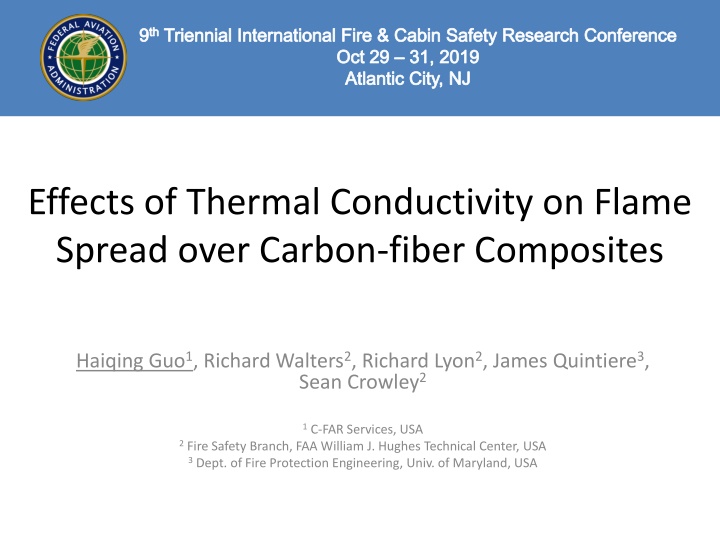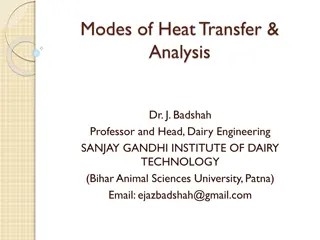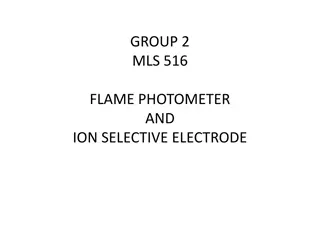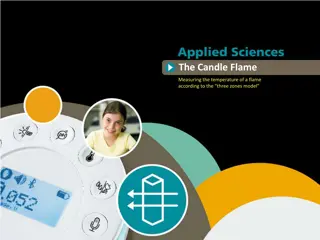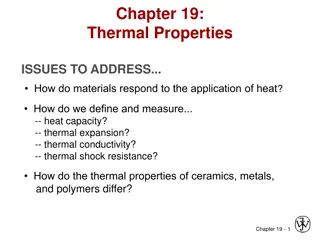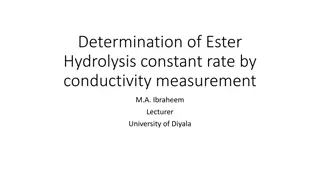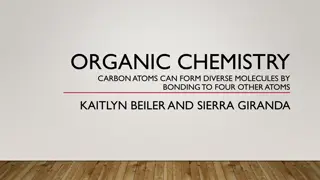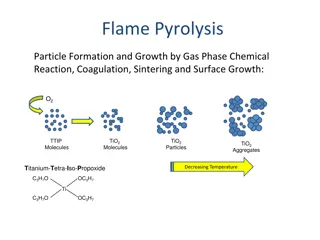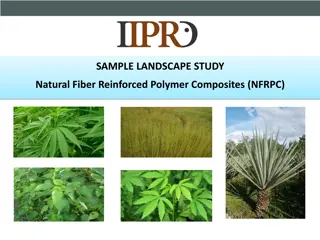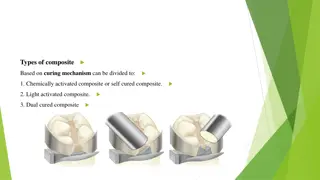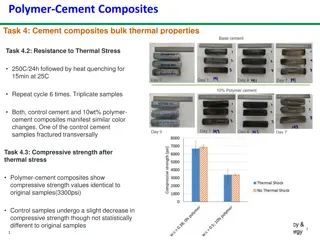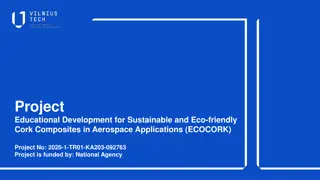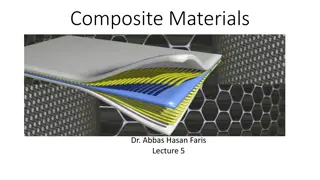Effects of Thermal Conductivity on Flame Spread over Carbon-fiber Composites
The research focuses on the impact of thermal conductivity on flame spread over carbon-fiber composites used in commercial airplanes. The study delves into pyrolysis kinetics, heat release rates, and ignition behavior to enhance in-flight safety by understanding downward flame spread. Experimental data and analyses shed light on critical factors influencing fire behavior in aircraft structures.
Download Presentation

Please find below an Image/Link to download the presentation.
The content on the website is provided AS IS for your information and personal use only. It may not be sold, licensed, or shared on other websites without obtaining consent from the author.If you encounter any issues during the download, it is possible that the publisher has removed the file from their server.
You are allowed to download the files provided on this website for personal or commercial use, subject to the condition that they are used lawfully. All files are the property of their respective owners.
The content on the website is provided AS IS for your information and personal use only. It may not be sold, licensed, or shared on other websites without obtaining consent from the author.
E N D
Presentation Transcript
9thTriennial International Fire & Cabin Safety Research Conference Oct 29 31, 2019 Atlantic City, NJ Effects of Thermal Conductivity on Flame Spread over Carbon-fiber Composites Haiqing Guo1, Richard Walters2, Richard Lyon2, James Quintiere3, Sean Crowley2 1C-FAR Services, USA 2Fire Safety Branch, FAA William J. Hughes Technical Center, USA 3Dept. of Fire Protection Engineering, Univ. of Maryland, USA
Background Carbon fiber-reinforced polymer structural composite is widely used in commercial airplanes (high strength-to-weight ratio). The polymeric binder (epoxy resin) is flammable. Fire in the inaccessible areas of an airplane is hazardous to in-flight safety. In 2013, a composite fuselage Boeing 787 experienced a battery fire in the overhead space that propagated along the crown of the airplane. 2
Background In-plane thermal conductivity is about one magnitude larger than the in-depth thermal conductivity*. While the upward flame spread is more dominated by the flame radiation, the downward flame spread is anticipated to be affected by the high in-plane thermal conductivity. Material: Material: 3KPW/TCR (3K plain weave fiber pre-impregnated with TCR resin. Three thickness: 4 ply (0.9 mm), 8 ply (1.8 mm), 16 ply (3.5 mm). 3 *McKinnon et al., 2016, Journal of Fire Science 35(1), pp.36-61.
Pyrolysis Kinetics TGA tests in N2at heating rates of: 1, 3, 10, and 30 C/min Residual: 69.7 0.8 %. ASTM E1641: E = 163 kJ / mol, and A = 2.76 1010 s-1. @ 5% mass conversion Ignition T: 403 C (based on 1.2 mg/g-s mass flow at 30 C/min heating rate*) 4 *Lyon, R.E., Safronava, N., Crowley, S., 2018, Fire and Materials 42(6), pp.668-679.
Heat Release MCC (ASTM D7309) MCC: 1 C/s heating rate (ASTM D7309). Peak HRR: 100 W/g at 440 C. Heat of combustion (13.1 kJ/g-O2): 7.8 kJ/g initial sample, or 24.8 kJ/g volatile. Cone (ASTM E1354) Heat flux: 16 ply composite at 20, 22.5, 25, 35, 50, 75, and 95 kW/m2. No ignition below 20 kW/m2. Separation of peaks at higher radiant heat flux. 5
Ignition Simultaneous ignition happens above 20 kW/m2. Flame spread is anticipated below the critical heat flux. Small difference is expected due to the difference in boundary condition and ignition source. 6
Downward Flame Spread Diagram Cone heater is used as external heat flux. Ignitor: Premixed propane/air flame. (Ignites at Ts = 250 C). Mask (metal + ceramic paper) to avoid delamination and edge burning. 7
Flame Spread 16 ply composite @ 22.5 kW/m2. Steady state flame spread rate is calculated. Highly parabolic flame front, indicating in-plane heat loss laterally. 8
Flame Spread Rate Heat fluxes: 20, 22.5, 25 kW/m2. Flame spread rate ranges between 0.1 1.8 mm/s in the explored region. Spread rate increases drastically as thickness decreases. 9
2-D Model 2-D downward flame spread model based on classic pure conduction theory. Assume steady state and thermally thin. Conductive heat loss in y-axis (both direction) comparable to that in x-axis. 10
Normalized Flame Spread Rate kx and ky is assumed about 10 times higher than the kz. In-plane k effect becomes negligible when the sample is thin or the external heat flux is high, the ability of heat to penetrate the sample is dominating. 11
Summary and Future Work The flammability of a specific carbon fiber-reinforced epoxy composite 3KPW/TCR type is researched in this study. The composite composes primarily carbon fiber (~ 70%) and the overall heat of combustion is as low as 7.8 kJ/g. The relatively high ignition temperature and low critical heat flux does not leave much space for a steady downward flame spread study. Downward flame spread on carbon fiber composite surface is studied at external heat fluxes between 20 25 kW/m2. The flame spread rate was measured between a range of 0.1 1.8 mm/s. In conditions where unconfined boundary exists and the heat also conducts laterally in-plane, the extra heat loss creates a parabolic flame front shape, and inhibits the flame spread rate. In the future, the 3-aixs thermal conductivity needs to be accurately measured and a more detailed numerical model needs to be done. 12
